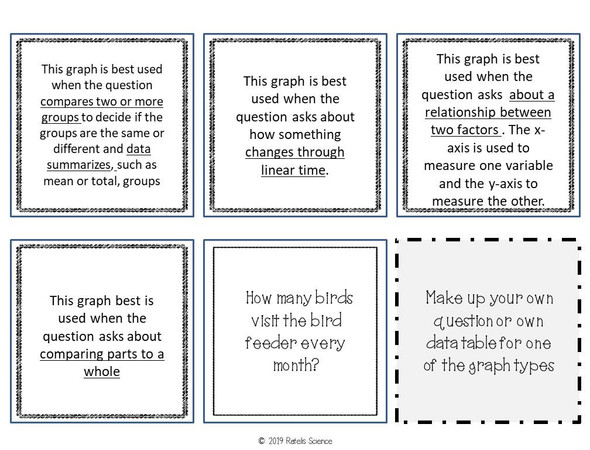Description
6 worksheets with a graphic organizer for helping students analyze data and use it to create a scientific explanation using NGSS Physical Science content. Prompts are flexible in use allowing you to have students discuss experimental design, representation of data in tables and graphs, and identifying trends in data.
This set includes topics related to waves, electric forces, magnetic forces, properties of matter, and comparing natural and synthetic materials. Supports lessons for NGSS Science and Engineering Practices of Analyzing and Interpreting Data, and Constructing Explanations.
Topics Covered:
- Signs of Chemical Changes. Supports NGSS MS PS-1-2. Students are given information about the properties of materials (color, state, and density) before and after mixing and reviewing the answers given by “students doing the lab”.
- Natural and Synthetic Materials Supports NGSS MS PS 1-3. Students are given information about the properties and uses of a selection of natural and synthetic materials. This is an opportunity to discuss that one set of data can be used to answer multiple questions.
- Repelling Balloons Supports NGSS MS PS 2-3 and MS PS 2-5. This is based on a lab my students do in class. We rub two balloons that are hanging on strings with fabric to put a charge onto the balloons. Students add more charge to the balloons by rubbing the balloons more times before testing. The assessment boundary for my standards only requires proportional reasoning and thinking, no use of Coulomb's Law for calculations.
- Magnets and Motor Speed Supports NGSS MS PS 2-3. This is based on the clarification statements from the NGSS.
- Interactions of Light Supports NGSS MS PS 4-2. This is a data table that has students look at the % of light that is reflected, absorbed, or transmitted by five different materials. This data allows students to work with a stacked bar graph and while less common, it is good for making sense practice.
- Tsunami Energy Supports NGSS MS PS 4-1. This data is presented as both a table and a graph of the estimated maximum wave height from a historical tsunami event with the estimated magnitude of the earthquake and the estimated energy of the wave when it hit shore.
Key Features:
- NGSS DCI Connections: Each data set is accompanied by a short introduction to aid students in interpreting the data effectively.
- Teacher Notes: Detailed guidance for educators on implementing the worksheets.
- Variety of Topics: Covers areas like motion investigation, specific heat investigation, data analysis, thermal insulators investigation, and magnetic force investigation.
You can use these examples with your students even if they haven't done the labs, but you might need to give them some background about the topic or time to "read" the graph. however, this is like many state testing situations so it is good practice to have to do a "cold read" of a graph.


















